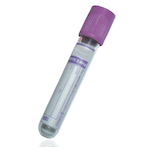
- Home
- Clinical Chemistry Tests
- Ammonia
Ammonia
Specimen Volume
1mL bloodSpecimen Transport
Transport sample immediately to laboratory. Sample should be received within 30 minutes of collection. If possible transport samples on ice.Sample Preparation
Turnaround Time
24 hoursSample Processing In Laboratory
Separate sample immediately on receipt as ammonia concentration can increase significantly during 30 minutes. Do not reject samples not received within 30 minutes. Please book in and pass sample to automation highlighting when sample was receivedSample Stability
Store frozen if analysis cannot proceed immediatelyGeneral Information
Increased concentrations of ammonia (>350 umol/L) are found in patients who are unable to metabolise ammonia because they have an absence or reduced activity of one or more of the enzymes of the urea cycle. These are classified generically as inborn errors of metabolism. Measurement of ammonia in plasma is important in the diagnosis of these conditions and in monitoring treatment, which is often by dietary protein restriction but also with specific drugs and/or intermediaries of normal metabolism. In severe cases, liver transplantation may be necessary. Increased plasma ammonia is also part of the diagnosis and monitoring of patients with the inherited organic acid disorders, inborn errors of both branched chain amino acids and propionyl-CoA metabolism.
Perinatal asphyxia and any severe illness in neonates can produce values of 170-200 umol/L.
Patient Preparation
Special care should be taken in cleaning the venepuncture site.
A free-flowing venous blood sample should be collected into EDTA tube. Drawing blood through a small indwelling catheter can cause haemolysis and hence falsely high ammonia. Smoking should be avoided prior to sample collection.
Notes
It is recommended that any high ammonia values are confirmed using fresh venous blood, collected onto ice and received within the lab within 30 minutes of collection.
Discrepancies between capillary and venous samples can occur, venous blood is the preferred specimen.
No significant interference from icterus or lipaemia. The concentration of ammonia is significantly increased by haemolysis
Reference Range
18 - 72 umol/L
Source of Reference Range
Abbott DiagnosticsSpecifications
- EQA Status: WEQAS Ammonia Scheme
- EQAS Scheme: Yes
Related Tests
Alanine Aminotransferase (ALT) Alkaline Phosphatase (ALP) Aspartate Aminotransferase (AST) Bilirubin (Total)Creation Date
Monday, 08 August 2011Modification Date
Tuesday, 27 February 2024General Information
Location of Laboratories
Copyright UHB Pathology 2018
Protection of Personal Information – Clinical Laboratory Services comply with the Trust Data Protection Policy and have procedures in place to allow the Directorate and it’s employees to comply with the Data Protection Act 1998 and associated best practice and guidance.
University Hospitals Birmingham medical laboratories at Queen Elizabeth Hospital, Heartlands Hospital, Good Hope Hospital and Solihull Hospital are UKAS (United Kingdom Accreditation Service) accredited to the ISO 15189:2012 standard. For a list of accredited tests and other information please visit the UKAS website using the following link: https://www.ukas.com/find-an-organisation/
- Molecular Pathology is a UKAS accredited medical laboratory No. 8759
- Biochemistry is a UKAS accredited medical laboratory No. 8910
- Haematology and Transfusion is a UKAS accredited medical laboratory No. 8784
- Clinical Microbiology is a UKAS accredited medical laboratory No. 8760
- Cellular Pathology is a UKAS accredited medical laboratory No. 10141
- Musculoskeletal laboratory is a UKAS accredited medical laboratory No. 9897
- Heartlands, Good Hope and Solihull Hospital pathology laboratories are a UKAS accredited medical laboratory No.8217.
Tests not appearing on the UKAS Schedule of Accreditation currently remain outside of our scope of accreditation. However, these tests have been validated to the same high standard as accredited tests and are performed by the same trained and competent staff.
For further test information, please visit the test database: http://qehbpathology.uk/test-database
For further information contact Louise Fallon, Quality Manager, 0121 371 5962
 Biochemistry
Biochemistry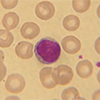 Haematology and Transfusion
Haematology and Transfusion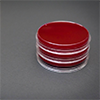 Clinical Microbiology (Including Virology)
Clinical Microbiology (Including Virology)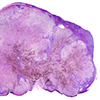 Cellular Pathology
Cellular Pathology General Information
General Information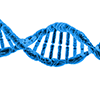 Molecular Pathology
Molecular Pathology